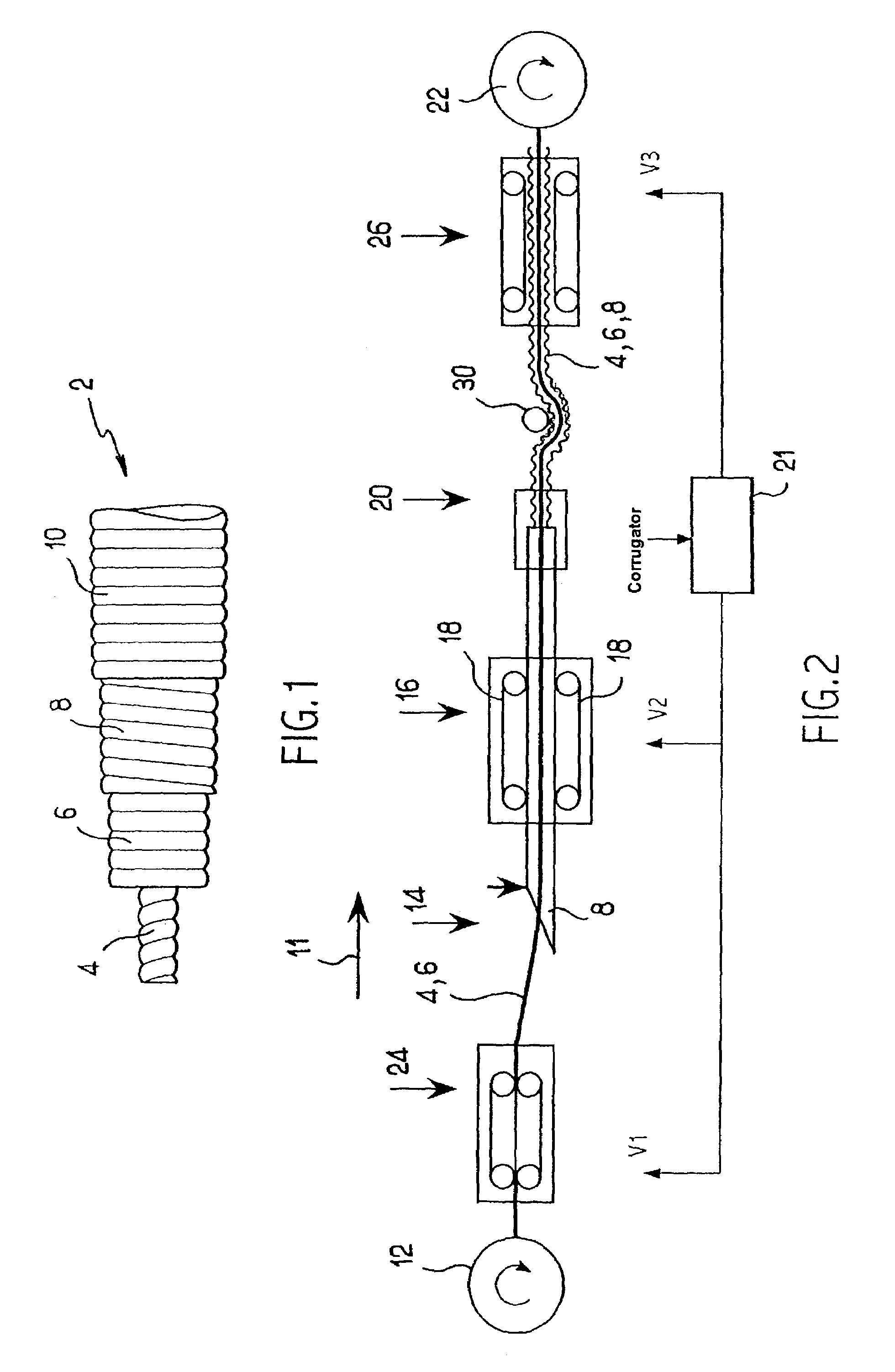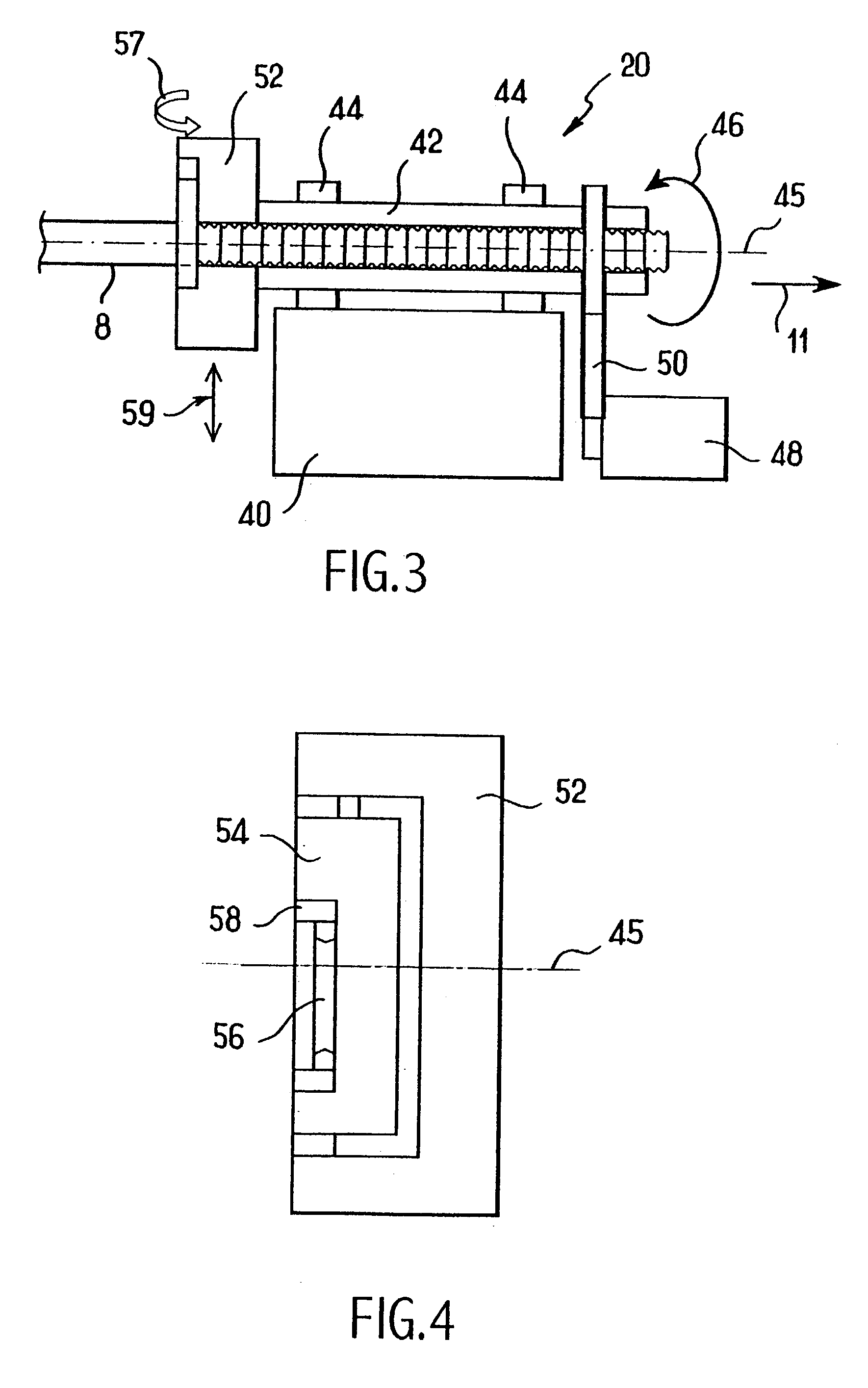Method of continuously fabricating a corrugated coaxial cable
a technology of coaxial cable and continuous fabrication, which is applied in the direction of insulating conductor/cable, shape tools, applications, etc., can solve the problems of poor quality, too complex operation for excellent efficiency to be likely, and nevertheless suffer from certain drawbacks, so as to reduce scrap and defects, the effect of high fabrication speed and no risk of degrading quality
- Summary
- Abstract
- Description
- Claims
- Application Information
AI Technical Summary
Benefits of technology
Problems solved by technology
Method used
Image
Examples
Embodiment Construction
[0060]In the embodiments described below, the method of the invention seeks to fabricate a corrugated coaxial cable 2 as shown, for example, in FIG. 1. The cable comprises a metal central conductor 4 constituting the core of the cable. The cable comprises dielectric material 6 in the form of a cylindrical tube covering the central conductor 4. In this case the dielectric is constituted by an expanded and extruded polymer. The cable further comprises a peripheral conductor 8 in the form of a cylindrical tube covering the dielectric material 6. Finally, the cable comprises a sheath 10 of polymer material in the form of a cylindrical tube covering the peripheral conductor 8. The layers 4, 6, 8, and 10 follow one another directly in that order going radially outwards from the central axis of the cable. Such a structure is conventional and is not described in further detail herein.
[0061]The peripheral conductor 8 is corrugated in conventional manner so as to give the cable a degree of fl...
PUM
| Property | Measurement | Unit |
|---|---|---|
| constant speed | aaaaa | aaaaa |
| speed | aaaaa | aaaaa |
| upstream speed | aaaaa | aaaaa |
Abstract
Description
Claims
Application Information
 Login to View More
Login to View More - R&D
- Intellectual Property
- Life Sciences
- Materials
- Tech Scout
- Unparalleled Data Quality
- Higher Quality Content
- 60% Fewer Hallucinations
Browse by: Latest US Patents, China's latest patents, Technical Efficacy Thesaurus, Application Domain, Technology Topic, Popular Technical Reports.
© 2025 PatSnap. All rights reserved.Legal|Privacy policy|Modern Slavery Act Transparency Statement|Sitemap|About US| Contact US: help@patsnap.com



